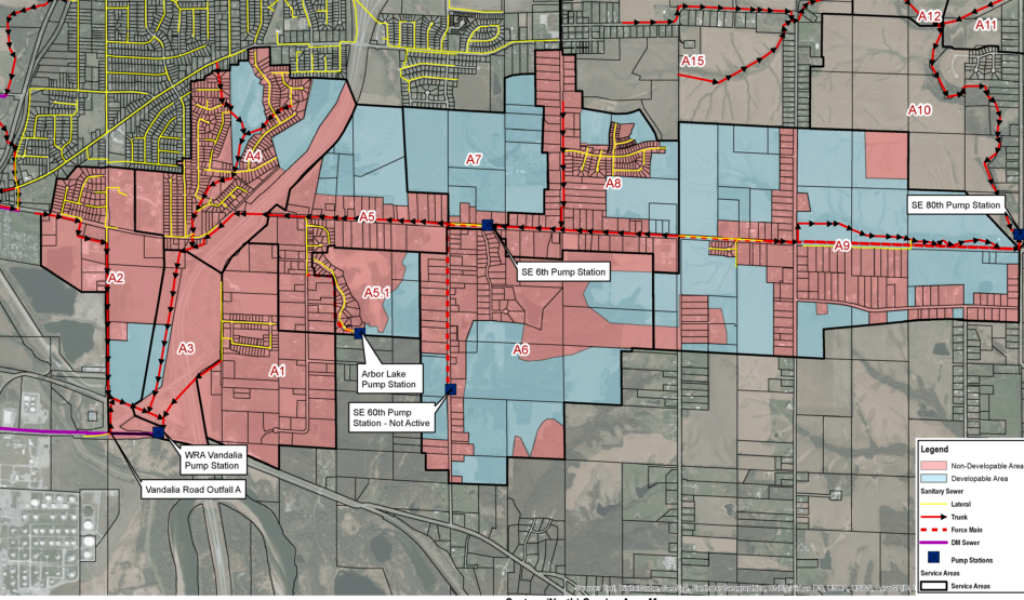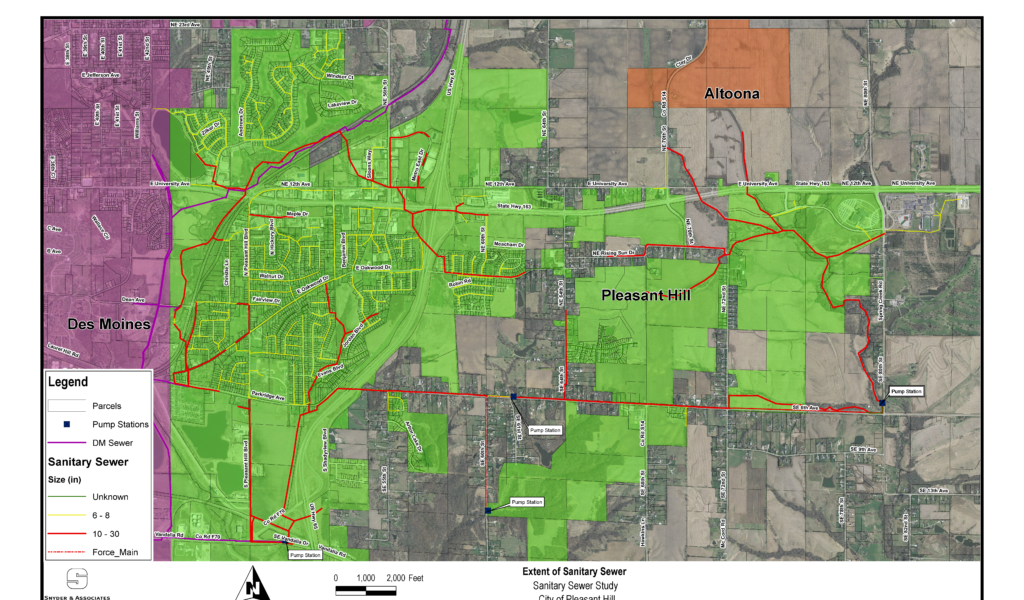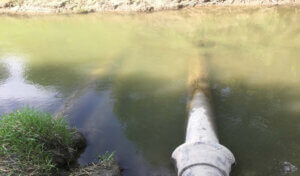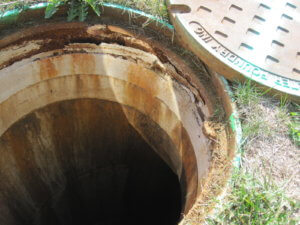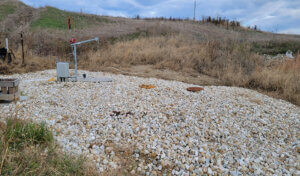
Rapid Community Expansion Stresses Existing Infrastructure
Community growth is a good thing, especially in suburban areas. However, successful and sustainable growth doesn’t happen on its own — it requires meticulous planning and strategic thinking. In 2010, the City of Pleasant Hill was in the midst of a rapid population expansion, experiencing a twelve percent increase in just nine years. If not adequately addressed, growth on this scale can put a strain on existing infrastructure, economic practices, and environmental processes.
As the city engineers for Pleasant Hill, the municipality tasked Snyder & Associates with conducting a Sanitary Sewer System Review and engineering report. The city-wide examination aimed to identify long-term system and infrastructure upgrades required to support the community’s continued growth. After experiencing excessive stormwater flows and wastewater leeching into a nearby creek, the city requested the study also include a partial infiltration & inflow (I/I) assessment.
Creating a Viable & Adaptable Infrastructure Plan
In an effort to guarantee the usefulness of the information gathered by the sewer study even further, our team intentionally structured the plan to avoid forecasting future development. Instead, all improvements outlined in the plan were presented so they corresponded to acres of development instead of a specific timeline. Therefore, if development moves faster than expected (or gets put on hold) the infrastructure plan remains viable. This strategy ensures the community can expand at its own pace and maintain growth long into the future without fear of overtaxing their system.
Diverse Planning Tool Capable of Serving Multiple Communities
This planning document’s value was proven when Pleasant Hill’s neighboring community, Altoona, sought collaboration to address a portion of their sanitary sewer. Altoona’s service area covers a section that naturally drains towards Pleasant Hill. Serving this area with sanitary sewer would have required multiple pump stations to convey the flows back to Altoona’s wastewater facility. Through our planning efforts, an alternative means of service was identified in the form of a gravity sewer conveyance to Pleasant Hill’s wastewater collection system.
Utilizing the Sanitary Sewer System Review and the foundation it provided, our team analyzed and evaluated the impacts this alternative posed on the Pleasant Hill system and the capacity enhancements that would be necessary to accommodate Altoona’s wastewater dilemma. Our evaluation highlighted improvements the added load would require and aided in compensation negotiations between the two municipalities.
Targeting Specific Areas for Sanitary Sewer Improvements
One of this project’s primary focus areas consisted of the East Side Sanitary Sewer Main Extension which serves a large portion of the Spring Creek watershed. In this area, the city saw the potential to serve up to an additional 16 square miles in the future, nearly three times the city’s current size.
While this expansion potential was impressive, it also brought the uncertainty of potentially overloading portions of the city’s wastewater collection system. The at-risk areas our team focused on included the Northeast 80th Street lift station, the Southeast 6th Avenue lift station, as well as several, aged sewer systems located downstream from sewer extensions and their expanded service areas. To find deficiencies that may hinder the current system from withstanding the anticipated increase in demand, our team used the city’s GIS database to calculate sewer capacities. They were then able to estimate sewer flows based on overall land use.
Numerous Improvement Options Provided to Meet Demand
To avoid future infrastructure issues, our team put forward multiple modifications and upgrades for consideration. Some of these adjustments included:
- Upgrading current 4″ force main pipes to 12″ and 16″ force mains at each lift station
- Incorporating new wetwell/drywells and vertical screening system at each lift station
- Reconstructing several critical sewer sections with larger pipes to increase capacity
- Rehabilitating defective manholes and covers
